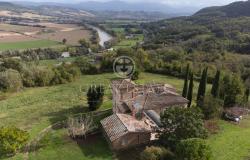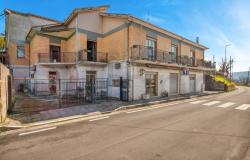 The Holy Grail, the elusive cup at the heart of countless legends, is hidden in catacombs under a sixth-century church in Rome, according to an Italian archaeologist.
The Holy Grail, the elusive cup at the heart of countless legends, is hidden in catacombs under a sixth-century church in Rome, according to an Italian archaeologist.
Alfredo M.Barbagallo believes the legendary article is in a chapel-like room underneath the Basilica of San Lorenzo Fuori le Mura, one of the seven churches which Christian pilgrims used to visit when they came to Rome.
Barbagallo has not actually been in the room itself, or even seen it. But, on the basis of two years spent studying medieval iconography inside the basilica, he is convinced that the Grail is there.
He has found a description of the chamber in a guide to the catacombs written in 1938 by a Capuchin friar named Giuseppe Da Bra. The friar describes a room of about 20 square metres with a vaulted roof ceiling.
"In the corner of a wall-seat there can be seen a terracotta funnel (colum) whose lower part opens out over the face of a skeleton," Da Bra wrote, explaining that giving liquid refreshment (refrigerium) to the dead was part of ancient funeral rites.
According to Barbagallo, who heads an association called Arte e Mistero (Art and Mystery), this funnel is the 'Holy Chalice' conserved and venerated by early Christians as the one used by Jesus Christ at the Last Supper.
He says this type of funnel was formerly used for distributing wine at group dinners, on precisely the same sort of occasion as the one when Jesus is said to have used the Holy Grail.
"I'm absolutely convinced that this is the object later called the Holy Grail," Barbagallo said.
The friar's written description of the room continues, giving details which in the view of the Italian archaeologist confirm the presence of the Holy Grail in the basilica.
"In excavations under the paving of this chapel four skeletons were found in a line. They had in their mouths coin from the imperial age and from the last days of the Republic," the 1938 text says.
Barbagallo believes the particular position of the four skeletons, the presence of the four coins in their mouths and the presence of another skeleton directly in the refrigerium position demonstrates the significance of the site.
ENTRUSTED TO ST LAWRENCE.
As Barbagallo points out, the alleged presence of the Grail in Rome and in this particular church fits the sketchy accounts of its early movements.
In 258 AD, during a phase of Christian persecution, Pope Sixtus V reportedly entrusted the treasures of the early Church to a deacon called Lawrence, Lorenzo in Italian. This deacon was martyred four days later and since then no one has ever seen the Holy Chalice.
Various legends have it that the cup, given the name Holy Grail in the Middle Ages, was taken to different countries. One of the most well known says it went to Britain, an idea exploited by Dan Brown in his bestseller The da Vinci Code.
But Barbagallo believes it never went anywhere, staying on the site of the tomb of St Lawrence, the deacon to which the cup was entrusted.
Emperor Constantine built a shrine on the site of Lawrence's martyrdom in the fourth century and the main part of the Basilica of San Lorenzo Fuori le Mura was built in 580 on the same spot.
In the wake of Barbagallo's claim, archeological authorities in Rome are expected to give their approval for the catacombs to be opened and their contents examined.









